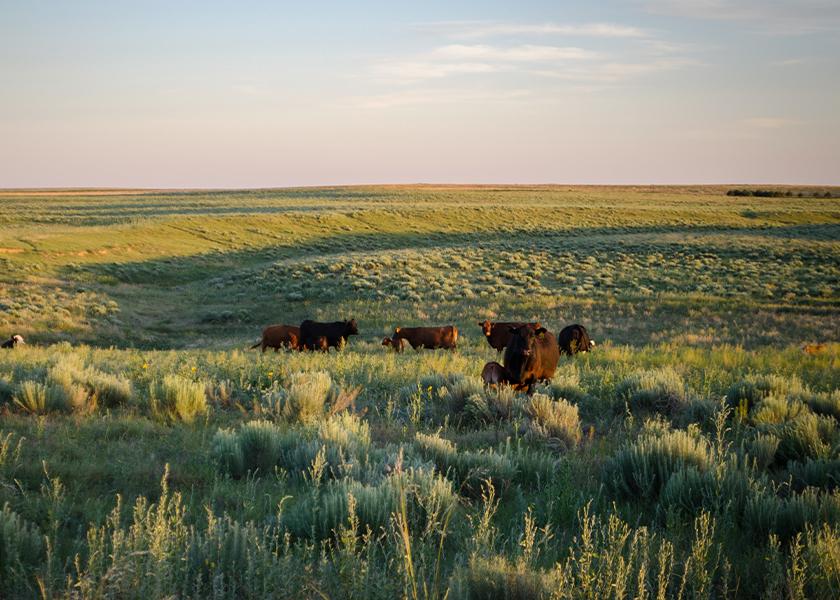How do we create sustainable cattle operations? Take credit for what producers are doing today.

By Debbie Lyons-Blythe, Blythe Family Farms
Growing a successful, sustainable ranching operation is a marathon, not a sprint. It takes commitment, vision, long-term planning and the forethought to know that your decisions will affect the operation for generations to come. That’s why so many operational decisions revolve around family traditions, generational land, what we’re building and the legacy we’re leaving behind. This concept is not new to cattle producers and is at the heart of what we do every day.
We know effective land and resource management is important. After all, without nutrient rich grazing land and ample, clean water, we can’t raise healthy cattle, and we certainly can’t boost our bottom lines to support our families and our communities.
We also know we’ve made significant progress in raising beef efficiently and sustainably, and we are part of a supply chain that has done the same — the U.S. beef industry is the most sustainable in the world. This is why we have to establish a system for recording and taking credit for the work we do on the producer level, especially when we think about the future of beef production for the next generation.
For example, we all have a system for grazing our cattle that works best for our own land — no one knows your land and cattle better — but many of us haven't written it down. Having a written grazing management plan not only allows your operation to take credit for the work you have been doing for decades, but it also allows the next generation of cattle producers to be successful in the future!
The U.S. Roundtable for Sustainable Beef (USRSB), a multi-stakeholder initiative made up of organizations throughout the industry, recognizes this need, which is why they have set industry goals. Working with members throughout the supply chain — producers, auctions, feedyards, packers and processors, and retail and foodservice organizations — the USRSB has enlisted the help of ranchers and businesses to ensure the goals not only support a sustainable beef product, they help everyone along the way stay profitable under varying market conditions.
Launched in April, the goals are an extension of the USRSB’s definition of sustainable beef: a socially responsible, environmentally sound and economically viable product that prioritizes the planet, people, animals and progress. They are the next step in working toward continuous improvement within the U.S. beef industry.
The goals are set around six high-priority indicators of sustainability: water resources, land, resources, air and greenhouse gas emissions, efficiency and yield, animal health and wellbeing, and employee safety and wellbeing.
Not only do they serve as a pretty handy gut check to review best management practices already in place, they offer up new ways that cattle producers — and all industry stakeholders throughout the supply chain — can enhance their operations, which also often naturally contributes to the overall sustainability of U.S. beef.
For cow-calf producers, that means:
- Recording 385 million acres covered by a written grazing management plan by 2050;
- Developing a cow-calf financial health index and set sector targets for improvement by 2025;
- Increasing the number of individuals certified in Beef Quality Assurance (BQA), or an equivalent program, by 10% year-over-year; and
- A 10% year-over-year increase in individuals trained for stockmanship and safety.
For many producers, these goals are likely already underway. They may even be something you’re already doing as part of your overall management plans. It is time that we get credit for all of these things that we are already doing through these goals.
If they are not already part of your operation, USRSB also has tools to help you gauge your current successes and where you can make additional improvements. Their self-assessment tool, available at USRSB.org, can help you take inventory of management practices you already use. Similarly, their sustainability modules can help you take a look at new ways to increase efficiency and sustainability. All resources are free to use and do not require a subscription.
The beef industry starts with us—the men and women raising cattle. Each sector within the value chain can make improvements that impact the entire industry. And when we all work together to protect our most valuable resources, we’re doing right by those who come next. We’re building a stronger legacy, one link at a time.
Join me in taking action to protect the resources that sustain us all at USRSB.org/goals-dv.







